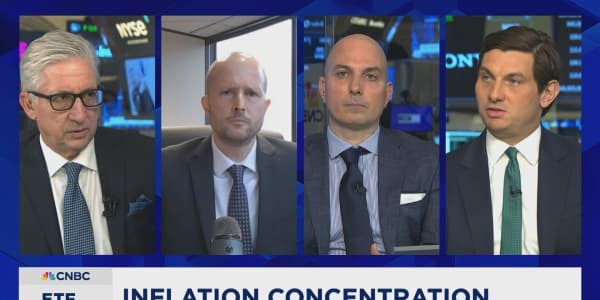
Not all hope is lost for U.S. investors when it comes to Ant Group's planned Shanghai-Hong Kong dual listing.
The financial technology-focused Alibaba affiliate announced this week that it would be going public in what could be one of the largest initial pubic offerings in history, according to some estimates.
In 2018, Ant Group — formerly Ant Financial — raised $14 billion in a fundraising round on what The Wall Street Journal reported was a $150 billion valuation. This week, David Dai, a senior analyst at Bernstein, said it could be as high as $210 billion. Bernstein has estimated that Ant Group's revenue in 2019 was around $20 billion.
The world's largest IPO to date, that of oil giant Saudi Aramco, raised $25.6 billion in its late-2019 listing, narrowly beating Alibaba's $25 billion 2014 debut.
Despite the fact that Ant Group, which runs Alipay, has chosen to list in Shanghai and Hong Kong, U.S.-based investors will likely have a few other ways to access the IPO's potential gains, CFRA's Todd Rosenbluth said Monday on CNBC's "ETF Edge."
The first will likely be Renaissance Capital's International IPO ETF (IPOS), which invests in overseas companies that have recently gone public, said Rosenbluth, his firm's senior director of ETF and mutual fund research. Over half of IPOS' portfolio is allocated to Chinese stocks.
"It's logical that this is the ETF that's first to get exposure to it," Rosenbluth said. "Then again, this is likely to be added into those broad emerging market ETFs or China-specific ETFs, and you can get IEMG and VWO, the two heavyweights within the emerging market space, to get exposure to it at some point."
China-focused ETFs including the iShares MSCI China ETF (MCHI) and the SPDR S&P China ETF (GXC) are also likely to add the stock to their portfolios "once it makes it past the criteria," Rosenbluth said.
But that won't happen right away, Chris Hempstead, director of institutional business development at IndexIQ, said in the same "ETF Edge" interview.
"There will be a delay," he said. "I think if anyone has the ability to do it quickly, it's, to your point, Renaissance."
As for the broader indexes, "we expect something of this size and this magnitude would be up for consideration probably in the fastest order of time possible to be included," Hempstead said. "Then all of those passive indexes that Todd alluded to, all those ETFs that track those indices, will be having to add that name if it's allowed."
Both analysts admitted that rising U.S.-China tensions have created some obstacles in the China trade. But thus far, it hasn't stopped U.S.-based investors from reaping the benefits, they said.
"There will be an opportunity for U.S. investors to find ways and to find vehicles overseas to get access if they absolutely need to get access to a security like this," Hempstead said. "But ... the geopolitical tensions are definitely going to be an issue going forward and it's something to keep a very close eye on."
To Rosenbluth, "this is the benefit of what ETFs offer, for U.S.-listed investors to get exposure to harder-to-access international markets," he said.
"So, even though it won't list here from an individual stock perspective, U.S. ETF investors are the winner again and again and again," Rosenbluth said.





